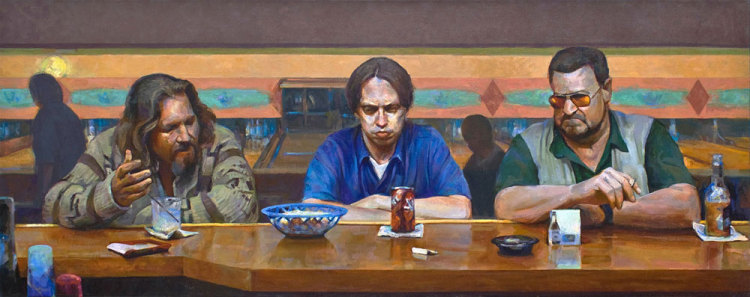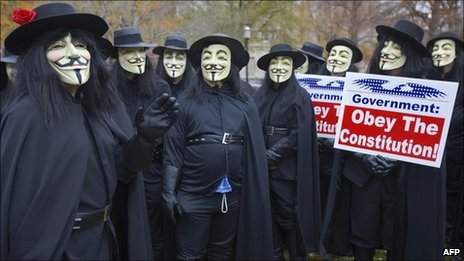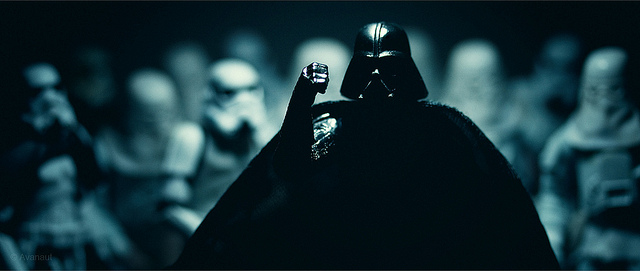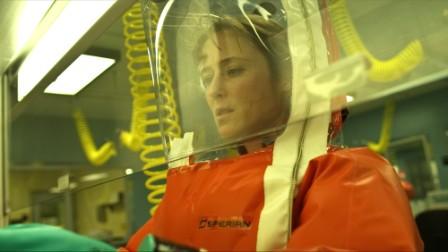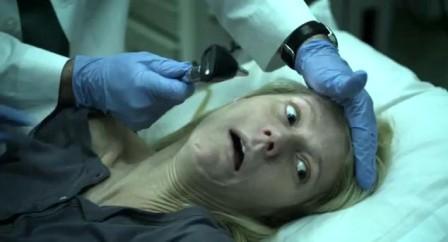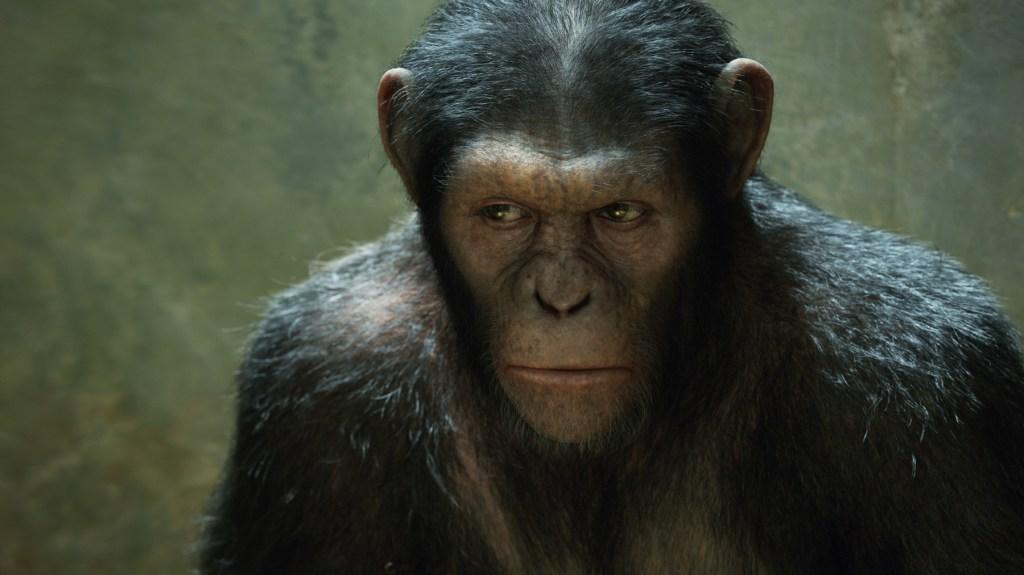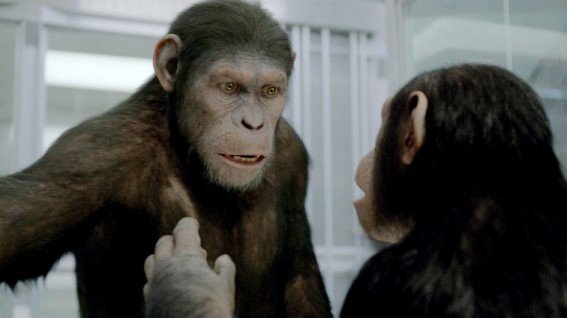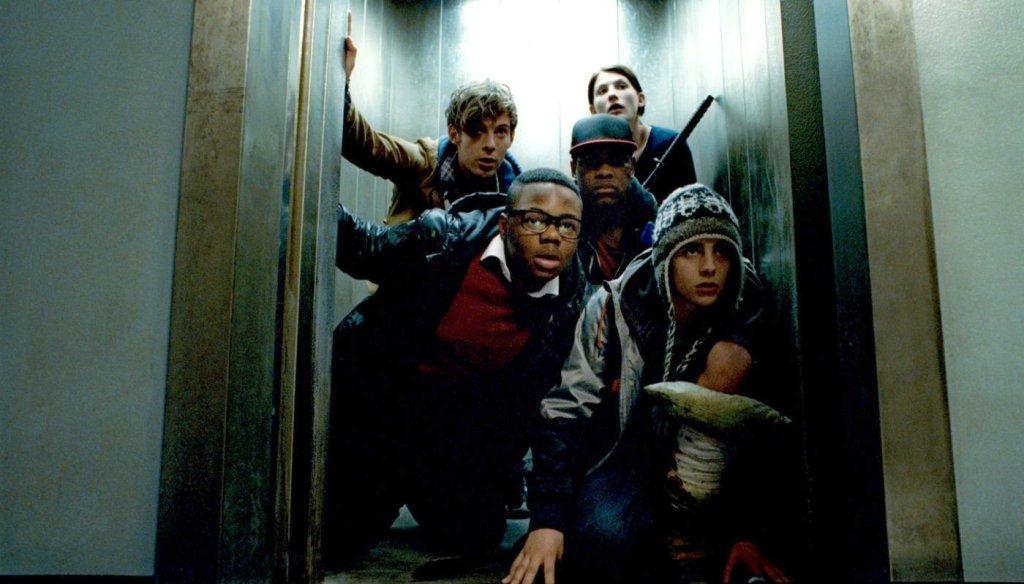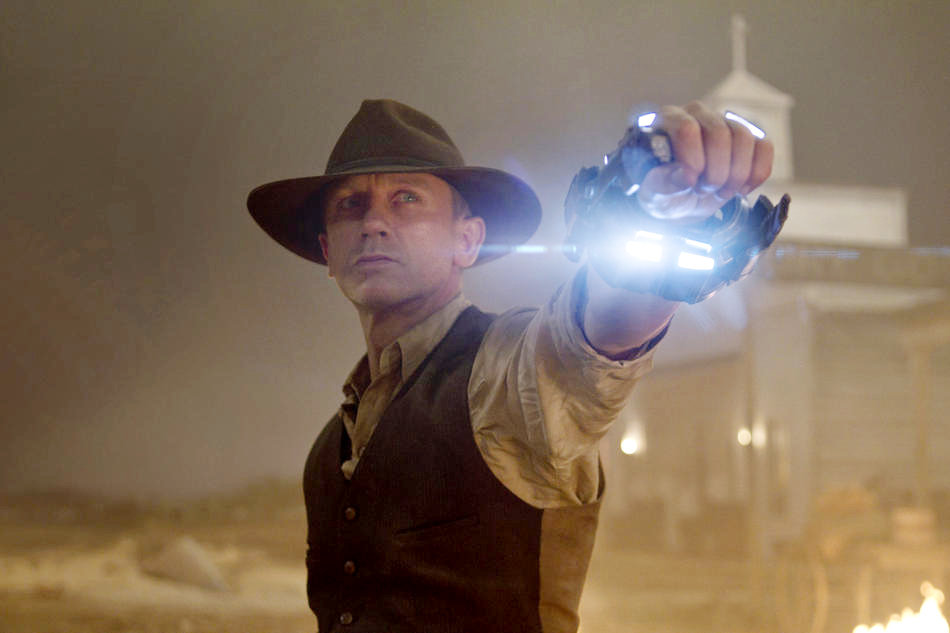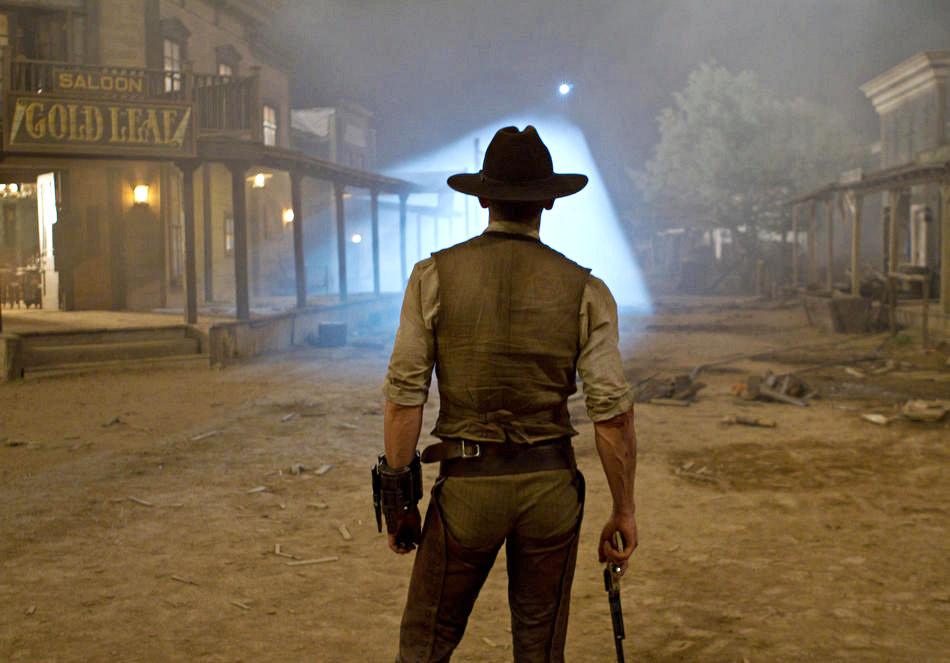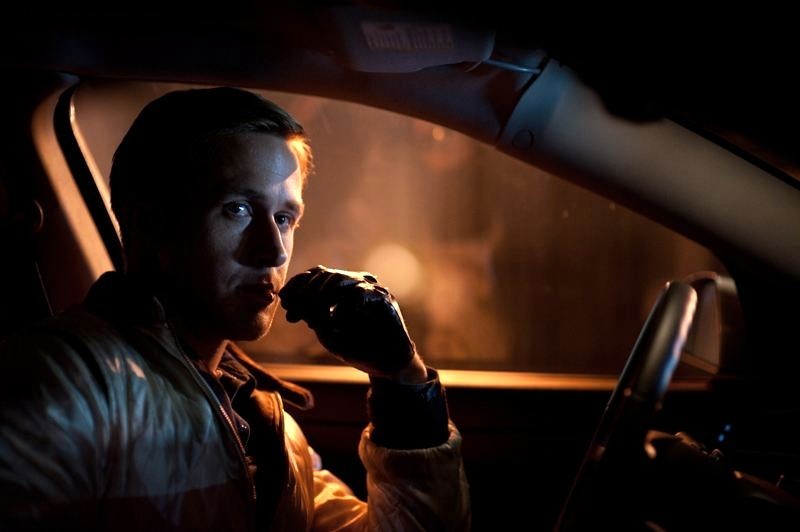
Well, I’ve been meaning to pair this review with the other Ryan Gosling movie of the moment, George Clooney’s The Ides of March. But since I still haven’t caught Ides and this has been languishing in neutral at the back of the queue…
Boasting a retro feel, catchy synth-pop soundtrack, New Wave credit stylings, and Lynchian bursts of graphic violence, Nicholas Winding Refn’s Drive basically attempts to be a high-minded, crazysexycool throwback to the Cinemax thrillers of yesteryear. (Put simply, what The American was to the European arthouse, this film — despite its nods to 70’s flicks like Vanishing Point and Two-Lane Blacktop — is to 80’s trash.) In this regard, Drive is half-successful: It’s well-made, stylish, and often-entertaining trash for sure. At the same time, the movie fails to live up to the promise of its first hour or so, and ended up feeling a bit hollow.
It doesn’t help that the film probably peaks in its opening minutes, when — after it is quickly established that our main character (Ryan Gosling) is a wizard behind the wheel who moonlights in LA as a getaway driver — we watch him conduct a nighttime job to the Chromatics’ “Tick of the Clock.” Rather than go all Grand Theft Auto in fleeing the scene of a warehouse robbery, Gosling’s Driver (yes, that’s his name) specializes in subtlety, misdirection, and knowing the lay of the land better than the cops do — More often, he’s just hiding the car rather than gunning it…and why is he listening to that Clippers game the whole time? (There’s a reason, and it’s a smart reveal.)
As it happens, Driver’s day jobs are Hollywood stunt man and mechanic for Shannon, a fatherly but perpetually unlucky grifter (Bryan Cranston). Recognizing the kid’s obvious talent, Shannon has been forging alliances with local gangland kingpins Bernie (Albert Brooks) and Nino (Ron Perlman) – who crushed Shannon’s pelvis for non-payment years earlier — to raise the money to get his charge into stock-car racing. While this plays out, Driver begins to woo Irene, the cute single mother next door (Carey Mulligan). (This usually involves Gosling stoically doting over her ten-year-old son.) But all plans get thrown for a curve when Irene’s ex-husband (Oscar Isaac) is released from the joint, with one last bit of unfinished business ahead of him — business that will, despite the hugely unlikely odds of such a coincidence, bring Driver’s work and home lives crashing together like a multiple vehicle pile-up on the 405…
Drive nicely zigs where you expect a zag in making Irene’s ex-con husband, Standard, a fundamentally decent guy. (And like Robin Hood and Sucker Punch, this is another film where Isaac makes a strong impression.) But soon thereafter, as Driver, Standard, and out-of-nowhere third wheel Christina Hendricks find themselves on that one last job that goes terribly wrong, Drive slips off the road and veers toward B-movie triteness. From here on in, it just becomes a not-particularly-interesting revenge flick. (This is also the point where the movie shifts gears from contemplative “lonely samurai” character study to visceral gore-fest.)
The thing is, for a movie called Drive, there’s actually not much driving to be had here. Now, obviously, the world doesn’t need another Fast and the Furious — We’ve got plenty of those already. But, aside from a quick getaway from that aforementioned botched job, the film never really makes much of the driving aspect of the story after the bravura opening sequence. Instead, Drive just becomes a standard-issue, the-mob-shouldn’t-have-messed-with-THIS-man action-noir, except this time the tortured loner in question tends to wear fancy leather driving gloves.
The other major problem, for me, at least, is Gosling, which is one of the reasons I was going to wait to pair this movie with Ides of March. I still haven’t seen Half-Nelson, but in the films I have seen him in — Blue Valentine, for example — he’s been underwhelming. And, for whatever reason, I just couldn’t buy the Steve McQueen-ish badass bit from him here. (There’s an excessively violent moment here in an elevator which is as ludicrous as it is gratuitous. Er…Gosling is not Jason Statham — that mob enforcer guy would break him in two.) When George Clooney played this sort of deeply recessed, melancholic character in The American, I thought it worked. But Gosling just seems…well, dweeby and desperate to me, one bad moustache away from restraining order territory. A real human being he may be, but I just could not take him seriously as a real hero.



